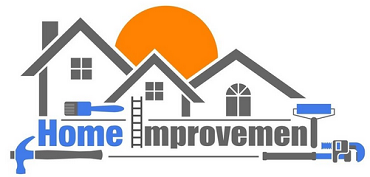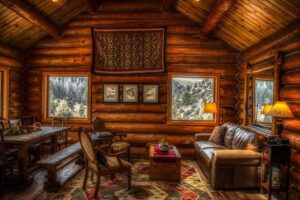The Importance Of Proper Ventilation In Roof Installations

Proper ventilation in roof installations plays a crucial role in maintaining a healthy and functional home. It allows for the free flow of air, removing excess heat, moisture, and pollutants from the living space. Without adequate ventilation, numerous problems can arise, compromising both the comfort and integrity of your home.
As you consider the various factors influencing the longevity and effectiveness of your roof, it’s impossible to ignore the pivotal role that proper ventilation plays in roof installations. Adequate ventilation not only ensures a comfortable living environment by regulating temperature and moisture but also extends the lifespan of your roofing materials
So for your roofing needs, put your trust in Dr. Roof as they ensure that ventilation and overall roofing integrity are handled with precision by a team dedicated to excellence. They serve major cities in Los Angeles, including:
Provider of top-quality roof installations in Los Angeles, CA
Experts in roof installation services in Calabasas, CA
Roof installation professionals in Encino, CA
Leading authority in roof installation services in Long Beach, CA
The Impact of Inadequate Ventilation
Increased Heat Buildup
Insufficient ventilation can lead to the accumulation of heat in your home, especially during the summer months. This heat buildup can make your living spaces uncomfortable, resulting in an increased reliance on air conditioning and higher energy bills.
Formation of Condensation and Moisture Problems
Inadequate ventilation can cause condensation to form in your attic or other enclosed spaces. This excess moisture can lead to the growth of mold and mildew, which can damage your home’s structure and compromise indoor air quality.
Weakened Structural Integrity
Without proper ventilation, moisture can accumulate in your attic and roof, leading to the deterioration of the structural components. Over time, this can weaken the roof’s integrity, increasing the risk of leaks, roof damage, and even structural collapse.
Reduced Energy Efficiency
Poor ventilation can also negatively impact your home’s energy efficiency. Heat trapped in the attic can radiate down into your living spaces, causing your air conditioning system to work harder to maintain a comfortable temperature. This can lead to increased energy consumption and higher utility bills.
Growth of Mold and Mildew
Inadequate ventilation creates a favorable environment for the growth of mold and mildew. These fungi thrive in damp, poorly ventilated areas, and can cause a range of health issues, including respiratory problems and allergies. Additionally, mold and mildew can damage your home’s surfaces, leading to costly repairs.
Common Signs of Poor Ventilation
Excessive Condensation on Windows
One of the most common signs of poor ventilation is excessive condensation on windows. If you often find water droplets or foggy windows, it indicates that there is too much humidity in your home, which can be resolved with improved ventilation.
Musty Odors in the Home
A musty or stale odor in your home can be a sign of inadequate ventilation. When air circulates poorly, it can trap moisture and odors, resulting in an unpleasant smell. Proper ventilation helps to eliminate these odors and keep your home smelling fresh.
Visible Mold or Mildew Growth
If you notice patches of mold or mildew on walls, ceilings, or other surfaces, it’s a clear indication of poor ventilation. Mold and mildew thrive in moist environments, and without proper airflow, they can proliferate quickly.
Stuffy or Stale Air
Stuffy or stagnant air is often a result of inadequate ventilation. When air isn’t allowed to circulate freely, it can become trapped, leading to a stale or uncomfortable atmosphere in your home. Opening windows or improving ventilation can help alleviate this issue.
Increase in Allergy or Asthma Symptoms
Poor ventilation can worsen respiratory conditions such as allergies and asthma. When allergens and pollutants are not properly removed from the air, they can trigger symptoms and compromise indoor air quality. Adequate ventilation helps to reduce these triggers and maintain a healthier living environment.
Dangers of Inadequate Ventilation
Inadequate ventilation poses numerous dangers to both your home and your health. The accumulation of heat, moisture, and pollutants can lead to structural damage, mold growth, and respiratory issues. Additionally, poor ventilation can compromise the effectiveness of insulation and increase energy consumption. Addressing ventilation issues promptly is essential to avoid these risks.
How to Improve Ventilation in Roof Installations
Improving ventilation in roof installations is crucial for maintaining a healthy and efficient home. Here are some strategies to consider: – Install ridge vents: Ridge vents are installed along the peak of the roof, allowing hot air to escape and fresh air to enter. This promotes natural ventilation and helps regulate temperature and humidity levels. – Utilize soffit vents: Soffit vents are located under the eaves of the roof and allow cool air to enter the attic space. They work in conjunction with ridge vents to create a continuous flow of air. – Consider attic fans: Attic fans can be installed to enhance ventilation in the attic. They help exhaust hot air and prevent heat buildup during hot weather conditions. – Remove any obstructions: Ensure that vents and air pathways are not obstructed by insulation, debris, or other materials. Clear any blockages to allow for proper airflow. – Consider the use of mechanical ventilation: In some cases, a mechanical ventilation system, such as an exhaust fan or whole-house fan, may be necessary to improve ventilation in roof installations.
Factors to Consider in Roof Ventilation
Climate and Weather Conditions
The climate and weather conditions in your location play a significant role in determining ventilation needs. In humid climates, for example, proper ventilation is necessary to prevent moisture buildup and the growth of mold and mildew.
Roof Design and Materials
The design and materials of your roof can impact ventilation. Different roof designs, such as flat or steep roofs, may require different ventilation strategies. Additionally, certain roofing materials may retain heat more than others, necessitating increased ventilation.
Roof Pitch and Slope
The pitch and slope of your roof also affect ventilation requirements. Steeper roofs generally allow for better natural ventilation, as hot air can more easily rise and escape through vents.
Size and Layout of the Attic Space
The size and layout of your attic space influence ventilation needs. A larger attic may require more ventilation to ensure proper airflow and temperature regulation.
Types of Ventilation Systems Available
There are various types of ventilation systems available, including ridge vents, soffit vents, gable vents, and powered exhaust fans. Each system has its advantages and considerations, and the choice will depend on factors such as the roof design and personal preferences.
Choosing the Right Ventilation System
Selecting the right ventilation system for your roof installation is crucial. Consider consulting with a professional contractor or roofer who can assess your specific needs and recommend the most suitable ventilation system. Factors to consider include the climate, roof design, and attic size. By choosing the appropriate ventilation system, you can ensure optimal airflow, prevent issues related to poor ventilation, and maintain a comfortable and healthy home.







